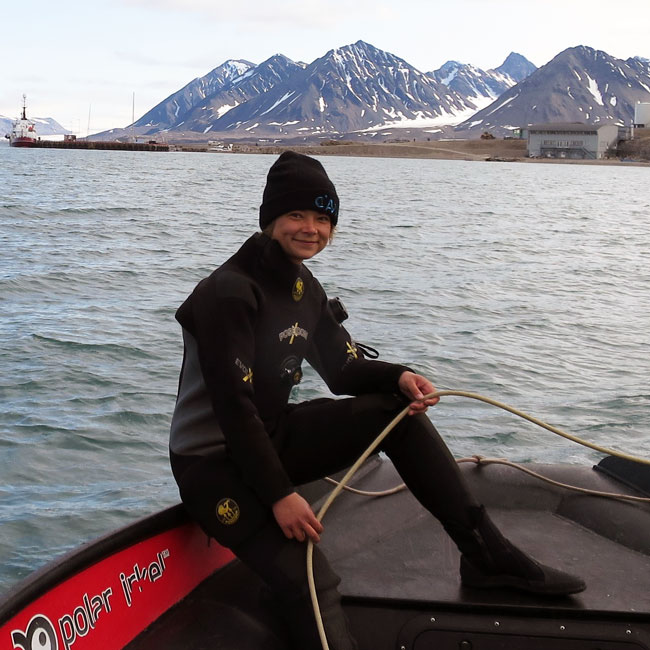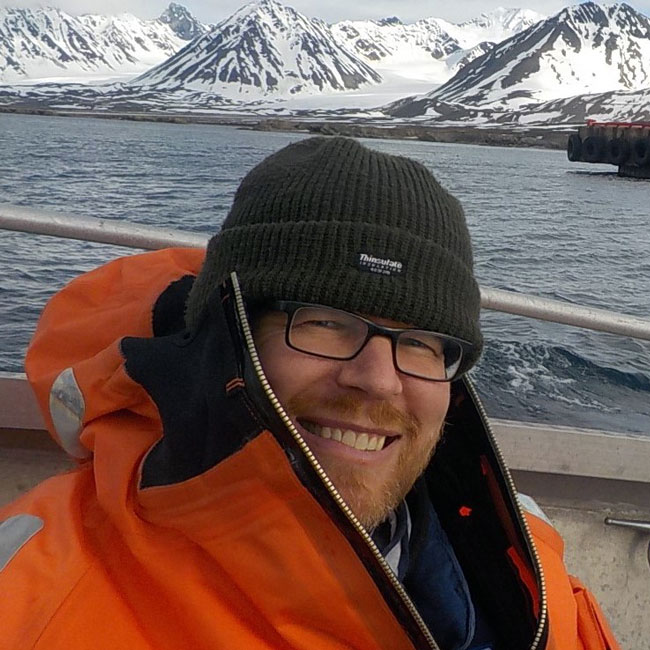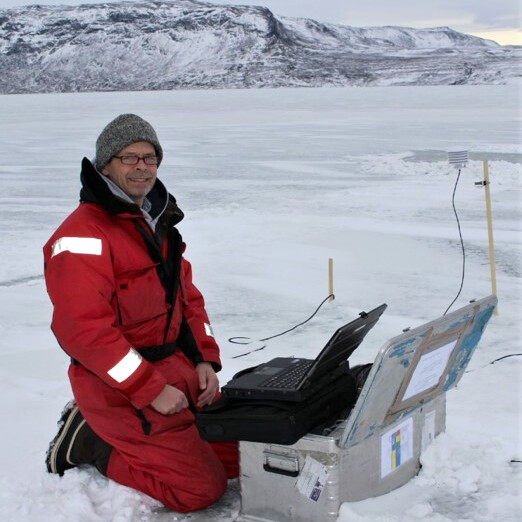Sarina Niedzwiedz: Second PhD thesis defended within FACE-IT
[Published 20 September 2024]
On 20 September 2024, Sarina Niedzwiedz successfully defended her PhD thesis, entitled “The Dark Side of Polar Day – The influence of coastal run-off on Arctic kelp communities“. Sarina is working within the FACE-IT project at the department of Marine Botany at the University of Bremen, Germany. She co-conducted physiological measurements on different kelp species in Svalbard and Greenland facing increasing coastal run-off. A more extensive summary can be found below.
Congratulations, Sarina!
Sarina was supervised by Kai Bischof (Marine Botany, University of Bremen).
The committee members of the defense were:
- Marko Rohlfs (University of Bremen, Germany)
- Kai Bischof (University of Bremen, Germany)
- Laurie Hofmann (University of Applied Sciences Bremerhaven & Alfred Wegener Institute, Helmholtz Centre for Polar and Marine Research, Germany)
- Lars Chresten Lund-Hansen (University of Aarhus, Denmark)
- Florian Stahl (University of Bremen, Germany)
- Milena Söhnen (University of Bremen, Germany)
Abstract
Arctic coastal ecosystems are currently facing severe environmental transformations due to ongoing climate change. Rates of Arctic sea surface temperature rise are far beyond the global average. Glacial, snow and permafrost melt are accelerating and precipitation rates are expected to increase, leading to extensive run-off plumes covering fjords. Run-off plumes alter many water column parameters: e.g. high concentrations of suspended particles reduce the flux of photosynthetically active radiation (PAR) and spectral composition; terrestrial and lithogenic material alter dissolved element concentrations. Along Arctic rocky coastlines, brown macroalgae, so called kelps (Laminariales), act as foundation species, providing the basis of life for many associated species. Recently, it was found that the thermal tolerance of kelps alone acts as weak predictor for their cold-distribution limit. Contributing to the knowledge of what defines the distribution of Arctic kelp populations, I combined in-situ monitoring with experimental approaches to analyse the acclimatisation potential and responses of kelps to environmental changes. Altered kelp performances can have cascading consequences to associated biota and is essential for the dynamics and functioning of future Arctic coastal ecosystems.
In two in-situ studies, I found run-off plumes to significantly condition kelp populations, having the potential to change Arctic coastal ecosystem functioning. While run-off influenced kelps were characterised by higher nitrogen contents, they also accumulated harmful elements. As both changes have the potential to alter susceptibilities and responses of kelps towards environmental drivers, the local conditioning of populations has to be considered in climate projections. I further found the kelps’ microbiome to significantly respond to differences in run-off intensity, influencing the health, nutritional value and element cycling of kelp holobionts. In three experimental studies, I focussed on the effect of changing PAR × temperature interactions. I showed that temperature influences are highly interactive with the prevailing PAR conditions: Being exposed to high PAR levels, kelps overall experienced high-light stress, and acclimatised by a reduction of the light harvesting complex. Warm temperatures mitigated high-light stress and cold temperatures enhanced it. In publ. IV, I showed that the interaction of high-PAR × cold temperatures is detrimental for the temperate kelp Laminaria hyperborea, preventing its spread to higher latitudes. When kelps were exposed to low PAR levels, I found their overall physiological stress level to be reduced. However, kelps were also characterised by an overall low carbon content, potentially resulting in habitat loss, when PAR intensities are too low to maintain a positive net carbon balance. The temperature impact under low-PAR availabilities was species dependent. Warm temperatures had the potential to further decrease the net carbon content of kelps, resulting in a temperature driven reduction of the lower depth distribution limit.
These strong physiological and biochemical responses of kelps towards changes in PAR × temperature interactions, have consequences for the seasonal performance of kelps. The results of my studies suggest that high-PAR availabilities during polar spring cause high physiological stress levels, eventually being mitigated in summer by increasing temperatures and a reduction of PAR by run-off. The response towards polar winter is likely to be strongly species dependent, being defined by a species net carbon balance. As run-off plumes establish a steep spatial gradient, PAR × temperature conditions vary greatly within a fjord. Generally, the run-off influence is highest in the inner fjord, decreasing towards the outer fjord. I found run-off to lead to an accumulation of harmful elements in kelps, which might cause a reduced algal performance in the inner fjord. Further, limited PAR intensities in run-off plumes reduce the maximum distribution depth of the kelps. Towards the outer fjord, PAR availability increases, eventually causing physiological and biochemical changes in kelps to counteract high-PAR stress. As outer fjord boundaries have a great influence on the fjord environment, conditioning kelp populations, research efforts must aim for a pan-Arctic approach to increase the understanding on general Arctic ecosystem functioning. The high spatial variability of present-day fjords, makes it difficult to model future developments of Arctic coastal ecosystems. While extreme events such as marine heatwaves, cold spells or the crossing of climate tipping points can lead to severe and immediate disruptions of ecosystems, gradual environmental changes alter the interspecific competition balance of kelps, which might lead to large scale changes of the ecosystem. While I argue that the presence and intensity of run-off plumes act as integratory predictor for kelp forest distribution, more undescribed parameters have to be explored, e.g. substrate availability.
On a global scale, kelp forest losses at their warm distribution limit seem to outpace their expansion at high latitudes. Hence, the area of wild kelp forests and their contribution to global carbon sequestration might decline in the near future. A possibility to increase kelp carbon sequestration might be the implementation of kelp maricultures. High-latitude kelp maricultes might also provide a sustainable livelihood possibility. However, when farmed kelps are used for food production, the accumulation of heavy metals from run-off has to be considered.
Concluding, climate change induced Arctic run-off, and especially varying PAR availability, has drastic consequences on the performance of kelps, with the potential to limit Arctic kelp distribution. While I investigated the responses of kelp sporophytes, kelps have to complete their entire life cycle to establish stable populations. Hence, I propose future research to investigate the susceptibilities of the microscopic life stages. Further, it is crucial to understand and compare present-day spatial variability of abiotic conditions in fjords. Therefore, I propose the implementation of long-term monitoring stations, covering the fjord gradient.
Photos: Karin Springer & Florian Stahl

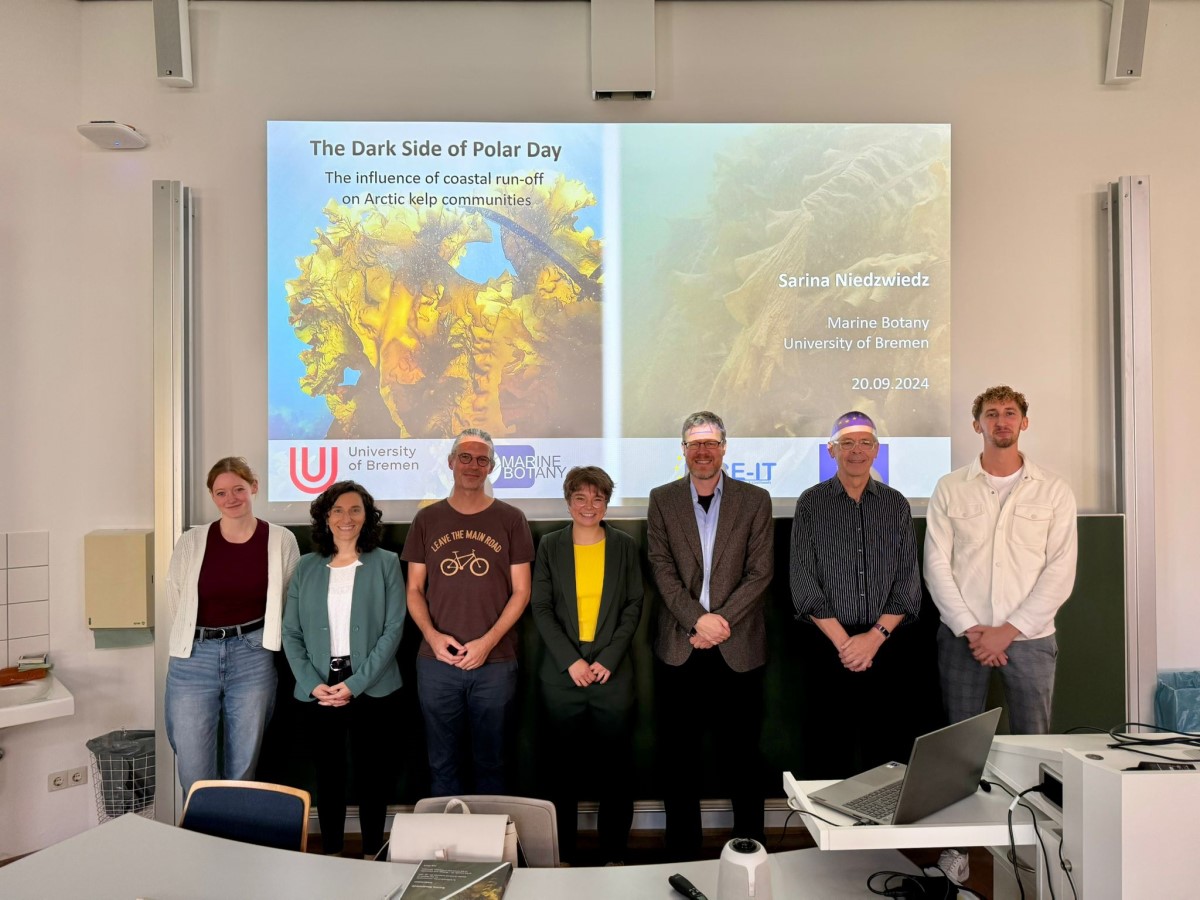
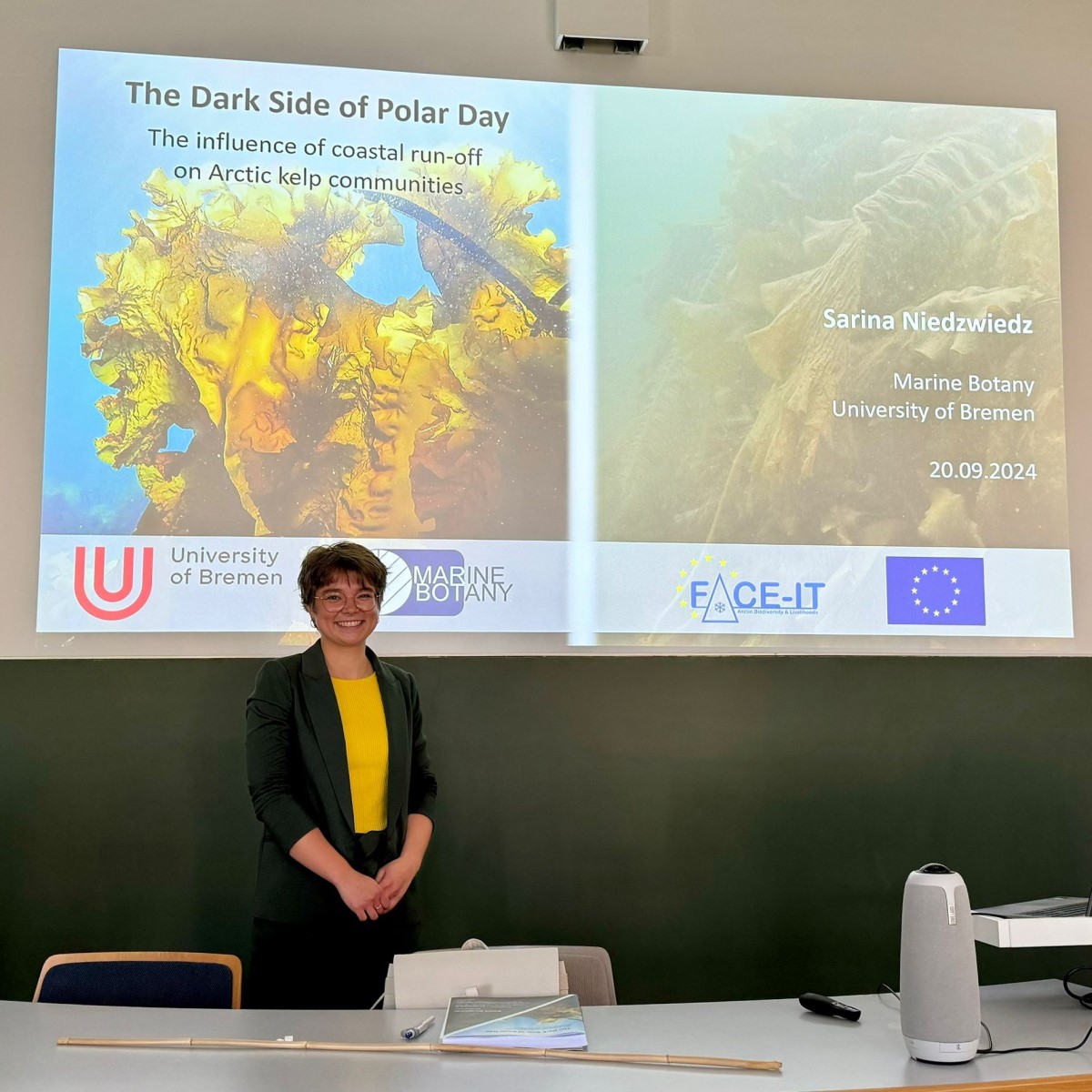
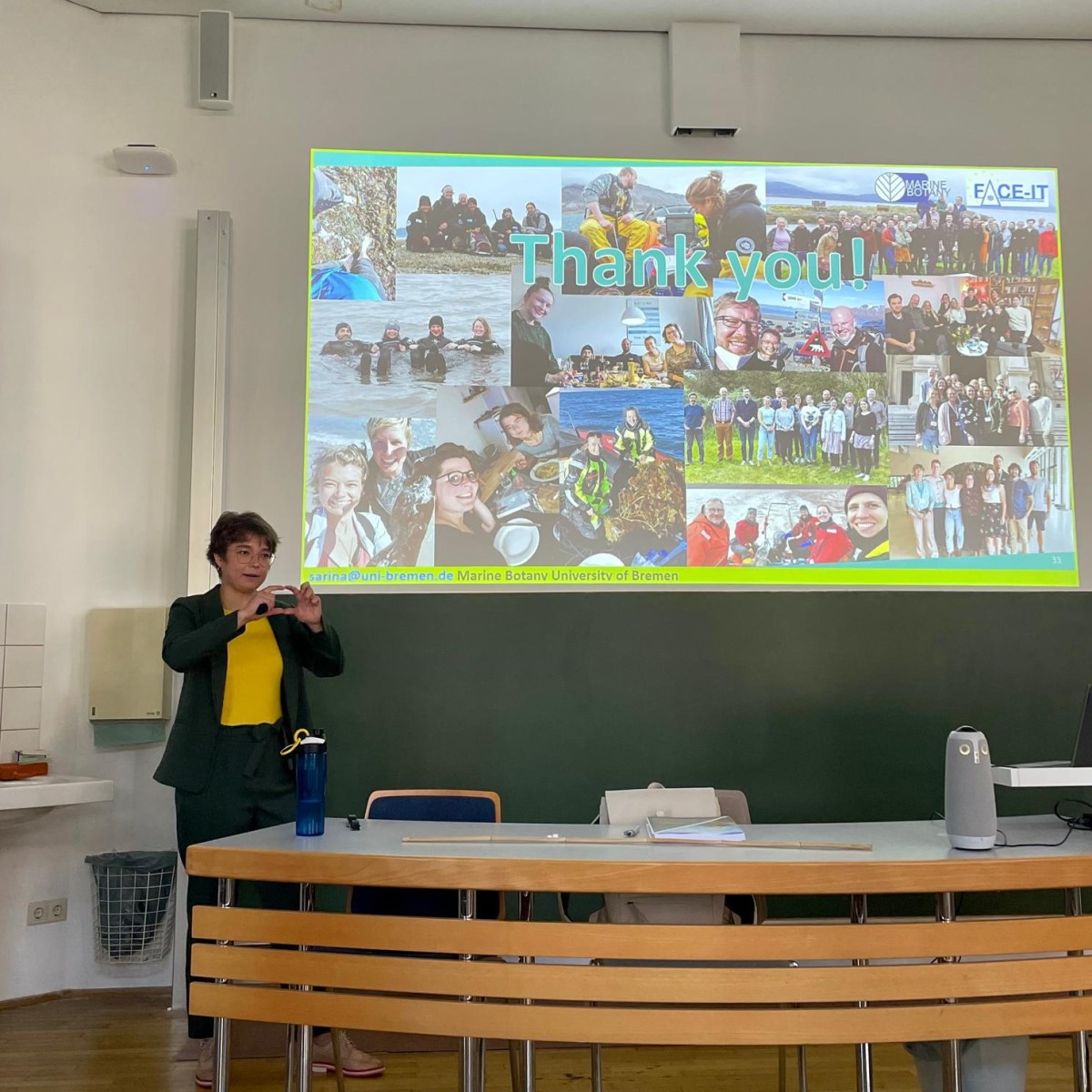
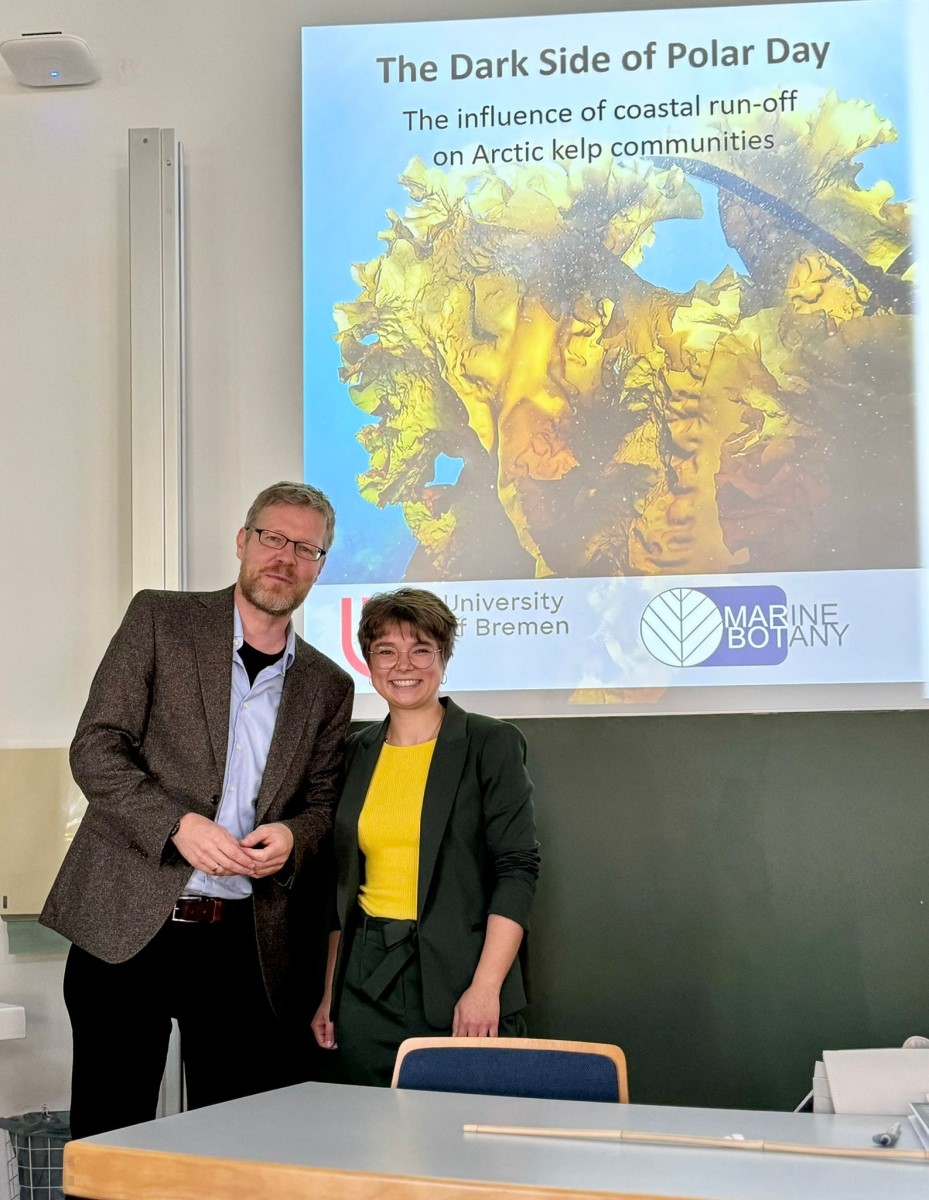
People involved
Sarina NIEDZWIEDZ
Role in FACE-IT:
• PhD student "Ecosystem Function Changes"
Marine Botany, University of Bremen, Germany
Sarina’s FACE-IT Projects
Kai BISCHOF
Role in FACE-IT:
• Scientific Coordinator
• Member of the Executive Board
• Co-Leader "Policy Dialogue and Outreach"
• Co-Leader "Project Management"
• Leader "Ethical Requirements"
• Researcher "Biodiversity Changes"
• Researcher "Ecosystem Function Changes"
Marine Botany, University of Bremen, Germany
Center for Marine Environmental Sciences MARUM, University of Bremen, Germany
UBremen personal page
Kai’s FACE-IT Projects
Lars Chresten LUND-HANSEN
Role in FACE-IT:
• Leader "Ecosystem Function Changes"
Arctic Research Centre, Aquatic Biology, Department of Biology, Denmark
Lars’ FACE-IT Projects

